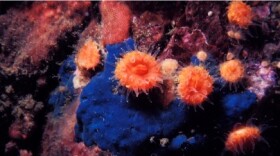Opponents of the proposed Pebble Mine in Alaska say the fight to stop it is far from over. Leaders from the United Tribes of Bristol Bay are preparing a challenge after the Army Corps of Engineers released its final environmental impact statement (EIS) on Friday.
The mine would extract gold, copper and other minerals from deposits near Alaska’s Bristol Bay, which is also home to the world’s most productive sockeye salmon fishery. It supports Alaska Native tribes, as well as commercial fishermen from around the world; hundreds head there from Washington every summer.
A coalition of Coast Salish tribes also signed a Bristol Bay Proclamation in January, demanding support for “people of the salmon” and a halt to the permitting process for the Pebble Partnership’s plans.
The concern is that the mining operations could decimate the area and its fishery, because of the risk of a tailings dam failure with toxic wastewater flooding into now-pristine critical habitat.
Technical experts working with the United Tribes of Bristol Bay say the final EIS is incomplete and problematic. The proposal is a scaled back version of what the Obama administration rejected in 2017. But critics say smaller doesn’t mean safer.
"In order to be profitable, a much larger mine will eventually need to be built,” said Richard Burton, a consultant with more than 30 years of experience in the mining industry.
He says the EIS has many technical flaws, but an overarching issue is that it doesn’t account for the true scope of what the Pebble Mine will need to become.
"Impacts and risks being evaluated are much smaller than those actually required for a full-scale, economically viable project,” he said.
“No one who is paying attention to this mine plan expects that the mine described to us would actually be the final footprint," added Dr. Cameron Wobus, a hydrologist with Lynker Technologies in Boulder, Colorado. “Because really no one in their right mind would invest billions of dollars to build a mine with the intent of leaving 90 percent of the ore in the ground.”
In June, multinational financial services conglomerate Morgan Stanley withdrew 99 percent of its backing of the project, the latest in a string of investors dumping shares.
Tribes in the area say they haven't been adequately consulted by the Pebble Parnership. Nondalton Council president George Alexie says his tribe, whose traditional areas for fishing and hunting lie closer to the mine site than any other people’s, is joined by allies across the country.
“(We) will never stop fighting to protect our way of life,” Alexie said.
The next step in the process will be the issuance of an actual permit from the Army Corps of Engineers with the formal record of decision, which cannot be issued until at least 30 days after publication of the final EIS. After that, opponents will decide whether to take legal action.
Those include many people in Washington, some aligned with a group called Businesses for Bristol Bay. Seattle’s celebrity Chef Tom Douglas is among the supporters, featured prominently on the group’s website.
Seattle filmmaker Mark Titus also made a documentary about his connection to Bristol Bay and is using it in a campaign to help stop the Pebble Mine; a national virtual event screening of the film, called "The Wild," takes place Aug. 6 at 5 p.m. Pacific Standard Time.
The Pebble Partnership says it will provide lucrative employment, directly and indirectly, during the mine’s construction.
"We anticipate that the project will generate 750 to 1,000 direct jobs for Alaskans and 1,500 to 2,000 jobs overall," reads a statement on the project website.
The Pebble mineral deposits are estimated to be worth $500 billion dollars.







